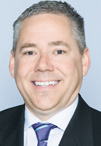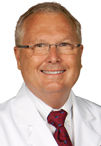By PATRICIA CORRIGAN
When some accomplished physicians in the CHRISTUS Trinity Mother Frances Health System of Tyler, Texas, repeatedly rated low in communication skills on patient satisfaction surveys, Dr. Scott Smith proposed a program designed to enhance those skills and improve patient service.

Smith
"All of us were a little embarrassed," recalled Smith, a senior vice president of CHRISTUS Trinity Clinic. The CHRISTUS Health-owned specialty physician group practice is a not-for-profit organization. Its doctors work at CHRISTUS Mother Frances Hospital and in its medical offices in Northeast Texas. "I said let's take our top communicators and teach them how to coach other physicians and advanced practice clinicians," Smith said. Smith, who came to CHRISTUS Health four years ago, had faith in the coaching program, which he had observed in practice when he worked at Kaiser Permanente in Colorado.
"Good communication skills provide a quality experience for patients and providers alike, and a good experience also is a quality indicator for better health outcomes," said Smith, who is also vice president of primary care and clinical operations for the CHRISTUS Health system.
In 2015, CHRISTUS Mother Frances Hospital–Tyler initiated the coaching program; and, after a bumpy start, the results have been impressive. Last year, 82 doctors at the hospital received perfect scores from the agencies that track consumers' assessments of satisfaction with their medical professionals. Before taking part in the program, Smith said, some of those doctors had ranked in the 50th percentile or below on their patient-rated communication skills.
The coaching program has drawn national attention. In part because of the program, the American Medical Group Association awarded CHRISTUS Trinity Clinic its 2018 Acclaim Award, which recognizes medical groups and systems "that are bringing the American health care system closer to the ideal delivery model."
Last fall, Ernie Sadau, president and chief executive of CHRISTUS Health, told Modern Healthcare that the coaching program is an example of the system's patient-centered approach to care. "It's part of ensuring we are relating to the patient and their family about their care and that we understand what outcomes they want and what they are expecting from us," he said.

Kummerfeld
Dr. Kenneth Kummerfeld, a cardiologist at CHRISTUS Trinity Clinic, spends one-third of his time administering the program, working with 10 coaches chosen from different medical specialties, "all people who think this is important work," he said. CHRISTUS employs about 700 doctors and advance practice clinicians in eight hospitals and clinics in Northeast Texas, and to date about 100 have taken part in the program.
The coaching program has several facets. First, department chiefs attend a general meeting to hear expectations for performance against quality metrics and learn about coaches who can serve as resources and help identify providers interested in the program. Three coaching options are available, Kummerfeld said. "Some providers observe coaches interacting with patients, some coaches observe providers — reverse shadowing — and some coaches go on rounds to speak directly with patients about their experiences then report back to the providers."
What does Kummerfeld like about the coaching program?
"Good communication makes a difference," he said. "It doesn't matter how smart you are or how good a teacher — if you don't connect, patients don't have an incentive to cooperate with you. You have to care about them, and show that, and then they jump on board."
Kummerfeld finds the work satisfying. "I've been in cardiology here since 1984, and I'd come to a point in my career where there wasn't a lot new for me to do in cardiology, working with one patient at a time. But I knew I could take my experience in patient care and use it to show other providers how to communicate well with their patients," he said. "This magnification, this culture that we're producing together from top to bottom, is what I will leave here after I'm done. It's my legacy."
Smith and Kummerfeld both recalled that the coaching program got off to a rocky start, and they were eager to share the missteps, so others may avoid them. Originally, only the providers rated in the bottom quartile on communication skills were invited to take part. That made some practitioners feel picked on, Smith recalled. "We apologized, and we regrouped, and then we offered the coaching to everyone, regardless of their scores."
There still was some push-back. "Comments included, 'Are you kidding? Do you know where I trained?' — as though that's supposed to make a difference," Smith said, laughing. "Others said they would leave here before taking part in such a program. But then some of them did take part, and when they finished, they said, 'Everybody should do this,'" Smith said. "Today, our coaching program is growing, and it's good word of mouth that's spreading it. We're in a good groove now."
He added, "After all, I do believe we are here to improve health care in the healing ministry of Jesus Christ. That is our mission."
Tips for improving doctor-patient communications
The coaching program used by CHRISTUS Trinity Clinic at CHRISTUS Health facilities in Northeast Texas is based on the work of Richard M. Frankel and Dr. Terry Stein, described in an article published in The Permanente Journal two decades ago. Their research examines the effect of clinical communication on patient safety and patient outcomes. Strategies they cover in the 1999 article to improve providers' communications skills include:
- Do not take your phone or tablet into the exam room.
- Make eye contact and introduce yourself to the patient when you enter the room.
- Introduce yourself to any family members or friends accompanying the patient.
- Before logging in to look at the electronic health record, speak with the patient at eye level about his or her current health concerns.
- Allow the patient to speak uninterrupted as long as needed.
- When the patient finishes speaking, ask if he or she minds if you log in and type up what that patient has told you.
- After the exam, confirm any next steps the patient needs to take.
- Explain necessary tests and share how long it takes to get results.
- Before the visit ends, ask what questions you might answer for the patient.
"These strategies are good rules for interacting with everybody," said Dr. Scott Smith, who introduced the coaching program to the CHRISTUS Trinity Clinic group practice where he is a senior executive. "They work in any language and across all cultures."
He added that providers benefit as much as patients do from better communication, and the rapport may even help reduce burnout.
"We are firm in our belief that when a provider has a positive experience with a patient, it makes a provider's very busy day go better," Smith said. "Hearing a 'thank you for listening well and understanding' from a patient gives me so much energy that I'm eager to do it again with the next patient.
"There's a science to this coaching program — and we hope everyone starts their own."
— PATRICIA CORRIGAN